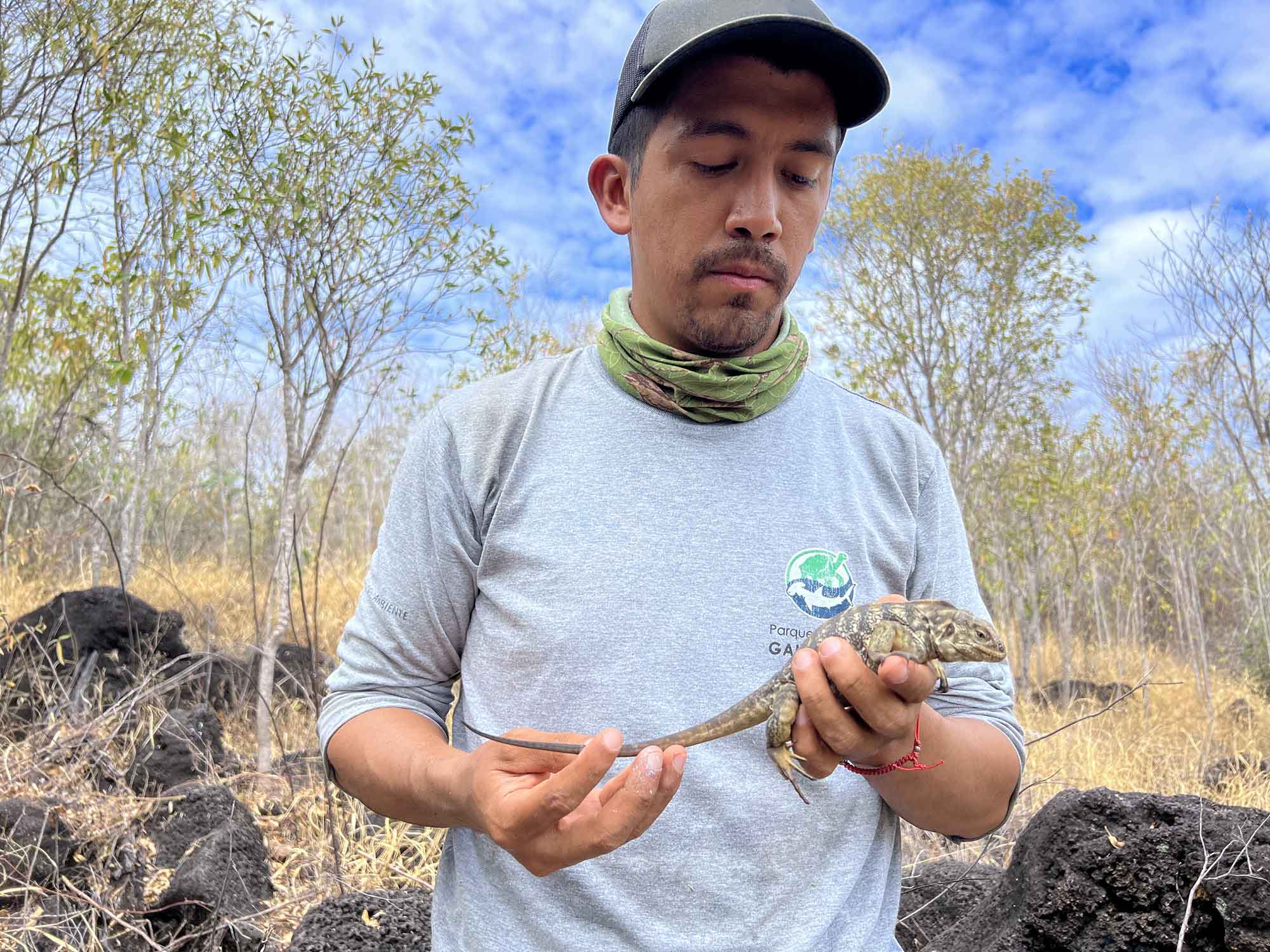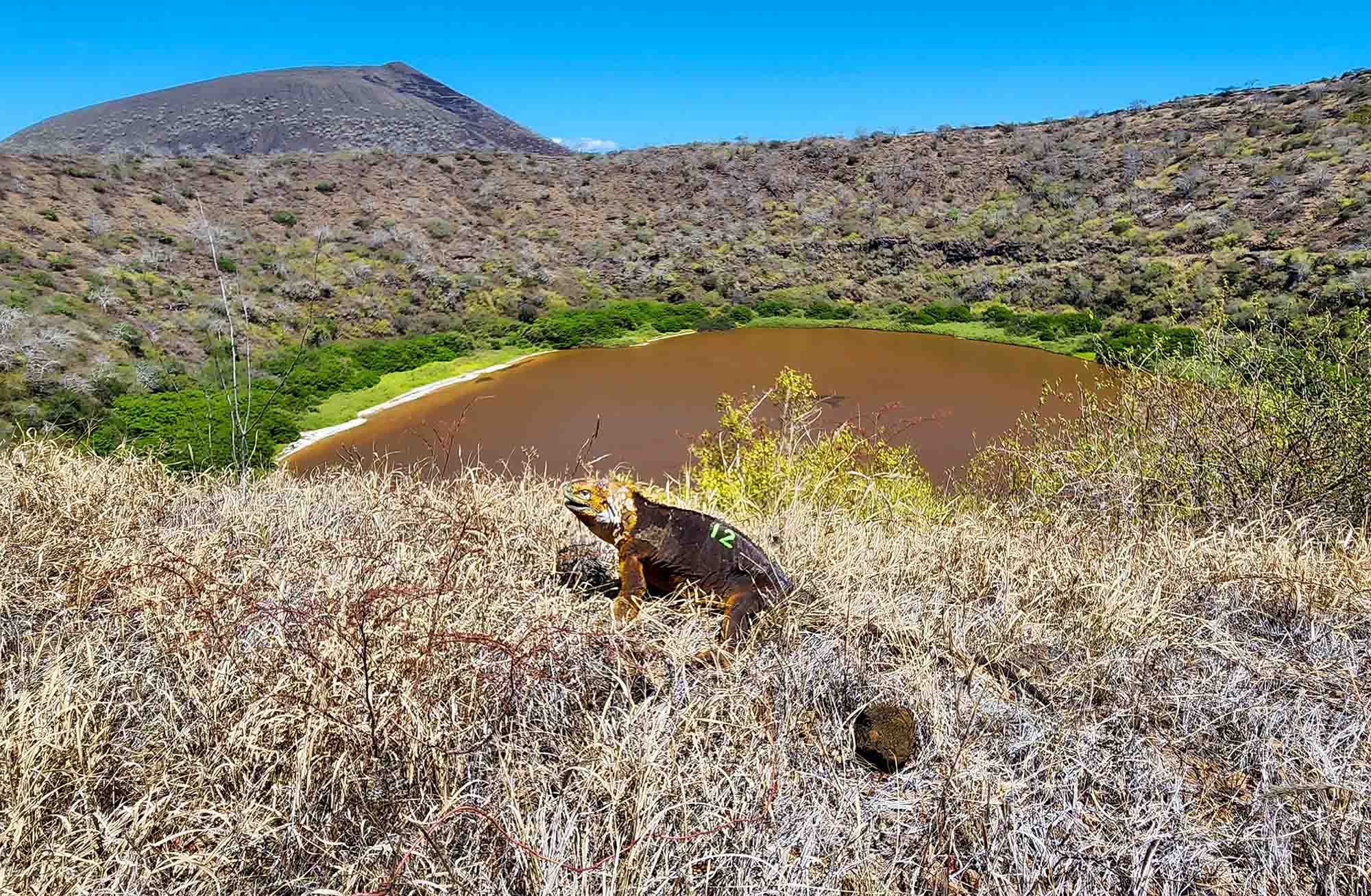Iguanas extinct from a Galapagos island for generations have been reborn nearly two centuries after they were first recorded by Charles Darwin.
The Galapagos land iguana had been completely wiped out on Santiago Island.
Listed as vulnerable on the International Union for Conservation of Nature’s (IUCN) Red List of Threatened Species, thousands of the iguanas were reintroduced to the island.
Now new images show the lizard is breeding on the island again.
Galapagos National Park said in a statement: “Two centuries later, land iguanas are born again on Santiago Island.
“Experts from the Galapagos National Park and scientific advisers, through monitoring, verified that after almost two centuries the land iguanas of the species Conolophus subcristatus occur again on Santiago Island.
“3,143 of these specimens were reintroduced three years ago with the aim of restoring the island’s ecosystem.


“The team covered about 36 square kilometres and found new individuals of various ages, which shows that this species is reproducing successfully.
“The iguanas were physically evaluated, weight and height measurements were taken, and the new individuals were marked for later identification.”
The director of the Galapagos National Park, Danny Rueda Cordova, said: “187 years later we witness again a healthy population of land iguanas, with adults, juveniles and neonates on Santiago Island.
“This is a major conservation achievement and strengthens our hopes of restoring islands that have been severely affected by introduced species. As an environmental authority, we will continue with the implementation of actions that allow us to approach the ecological integrity of the island’s ecosystem.”


And Luis Ortiz-Catedral, head of the expedition, said: “The island has already begun to show positive changes thanks to the distribution of iguanas, as they have opened paths, removed soil and dispersed seeds and other results, such as changes in population dynamics and greater availability of food for others. endemic species such as hawks will be seen in a few more years.”
The statement also said: “The ecological restoration of Santiago Island, one of the largest in the archipelago, began in 2002 with the execution of the ‘Isabella Project’, for the eradication of goats and pigs. Over the years, the ecosystem began to recover and offered the necessary conditions to house a population of land iguanas, of the same species as the locally extinct one.
“The ecological assessment of the population of land iguanas in Santiago is a joint activity between the Directorate of the Galapagos National Park, Re:Wild, Galapagos Conservation Trust, Island Conservation, Galapagos Conservancy and Fundacion Jocotoco.”
The Park explained that in 1835, Darwin recorded the presence of a large number of land iguanas of different ages on Santiago Island.
But in future expeditions carried out by the California Academy of Sciences, in approximately 1903 and 1906, they no longer found live specimens on the island.


To find out more about the author, editor or agency that supplied this story – please click below.
Story By: Joseph Golder, Sub-Editor: William McGee, Agency: Newsflash
The Ananova page is created by and dedicated to professional, independent freelance journalists. It is a place for us to showcase our work. When our news is sold to our media partners, we will include the link here.




